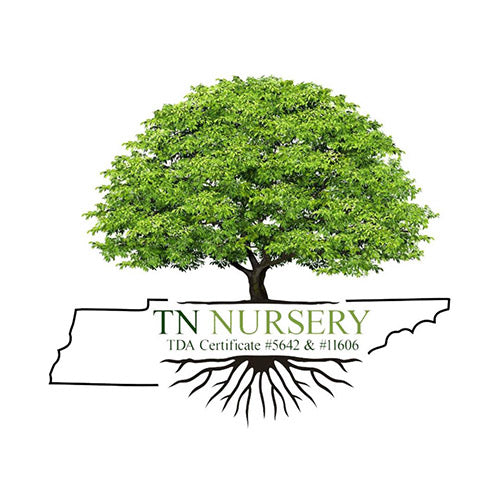A Balancing Act
The urban tree canopy is a critical component of modern cities, offering a multitude of benefits while also presenting unique challenges. Trees enhance the aesthetic appeal of urban landscapes and contribute significantly to the well-being of communities and the environment. In this article, we will explore the various advantages of the urban tree canopy, the challenges it faces, and some tree varieties suitable for urban planting, including oak trees, bald cypress, hornbeam, red maple, redbud trees, and crepe myrtles.
Benefits of Urban Tree Canopy
- Improved Air Quality: Urban trees play a crucial role in removing pollutants from the air. Through photosynthesis, they absorb carbon dioxide. They also release oxygen, helping combat climate change and enhance air quality. Additionally, trees trap particulate matter, reducing the risk of respiratory illnesses in urban populations.
- Temperature Regulation: Trees provide natural shade and help lower temperatures in urban areas through a process known as transpiration. This cooling reduces the urban heat island effect, making cities more comfortable and energy-efficient.
- Stormwater Management: The root systems of trees absorb rainwater and reduce surface runoff. These systems mitigate flooding, erosion, and the contamination of water bodies with pollutants. Properly managed urban tree canopies can alleviate strain on drainage systems.
- Biodiversity Support: Trees serve as habitats for birds, insects, and other wildlife, contributing to urban biodiversity. Maintaining a diverse tree population can support local ecosystems and promote urban wildlife conservation.
- Aesthetic Appeal: Trees enhance the visual appeal of urban areas, making them more attractive for residents and visitors. Green spaces with well-managed tree canopies create a sense of tranquility and natural beauty.
- Mental and Physical Health: Access to green spaces with trees has been linked to improved mental health, reduced stress levels, and increased physical activity. Urban tree canopies provide areas for relaxation and recreation.
Challenges of Urban Tree Canopy
- Limited Space: Urban areas often have limited space for tree planting, as buildings, roads, and infrastructure dominate the landscape. Selecting suitable tree species and employing innovative planting techniques are crucial to overcome this challenge.
- Soil Quality and Compaction: Urban soils are frequently compacted and of poor quality due to construction and heavy foot traffic. These conditions can hinder tree root growth and nutrient uptake. Soil improvement strategies are necessary for successful urban tree growth.
- Pests and Diseases: Urban trees are susceptible to various pests and diseases. Monitoring and managing these threats is essential to maintaining a healthy tree canopy.
- Competition for Resources: Trees in urban environments often compete for water and sunlight with other vegetation, buildings, and infrastructure. Balancing these competing interests is a complex task.
- Maintenance Costs: Urban tree canopy management, including pruning, watering, and pest control, can be costly. Municipalities and communities must allocate resources to ensure the long-term health of urban trees.
Tree Varieties for Urban Planting
- Oak Trees: Oaks are majestic trees that provide excellent shade and wildlife habitat. Varieties like the Northern Red Oak (Quercus rubra) and White Oak (Quercus alba) are well-suited for urban environments due to their adaptability and longevity.
- Bald Cypress (Taxodium distichum): The bald cypress is a deciduous conifer known for its attractive feathery foliage and tolerance for wet conditions. It thrives near water bodies and is an excellent choice for urban areas prone to flooding.
- Hornbeam (Carpinus spp.): Hornbeam trees are known for their dense, compact growth and tolerance for urban conditions. Varieties like the American Hornbeam (Carpinus caroliniana) are excellent for smaller spaces.
- Red Maple (Acer rubrum): Red maples are known for their vibrant red foliage in the fall. They adapt well to urban environments and are often used for landscaping because of their striking appearance.
- Redbud Trees (Cercis spp.): Redbud trees are small, ornamental trees known for their beautiful pink or purple spring blossoms. They are suitable for urban planting, especially in residential areas.
- Crepe Myrtles (Lagerstroemia spp.): Crepe myrtles are famous for their colorful, long-lasting summer flowers. They are versatile and can be pruned to fit various urban settings.
Paramount for Sustainable Urban Greening
The urban tree canopy is a vital element of modern cities, offering numerous benefits, including improved air quality, temperature regulation, stormwater management, biodiversity support, aesthetic appeal, and mental and physical health benefits. However, maintaining a healthy urban tree canopy also comes with challenges, including limited space, poor soil quality, pests, resource competition, and maintenance costs. Selecting appropriate tree varieties for urban planting is essential to overcome these challenges. Oak trees, bald cypress, hornbeam, red maple, redbud trees, and crepe myrtles are all excellent choices, each with unique characteristics and advantages. By carefully considering tree species and implementing proper maintenance practices, cities can continue to enjoy the many benefits of a thriving urban tree canopy, making urban environments greener, healthier, and more livable for future generations.
The urban tree canopy is a crucial asset for cities, offering an array of advantages while posing distinctive challenges. It is a green lung, purifying the air, moderating temperatures, and fostering biodiversity. Nonetheless, urban tree canopy management requires strategic planning to overcome issues. By recognizing the significance of urban tree canopies and investing in their maintenance, communities can ensure that their cities remain vibrant, healthy, and environmentally sustainable places to live.
